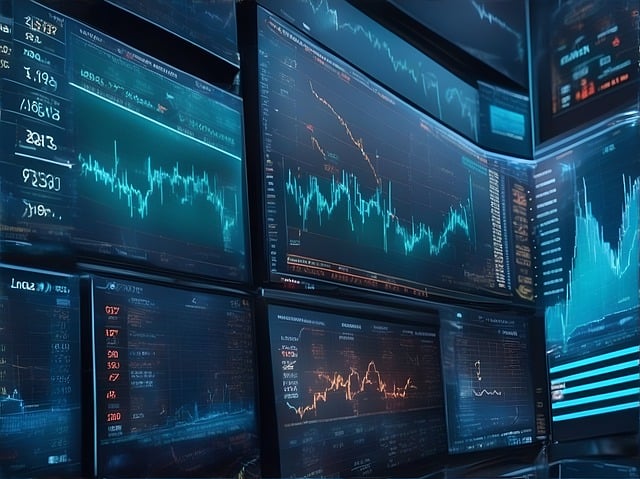The Ascendancy of Automated Trading Bots: Revolutionizing Finance
Author: Jameson Richman Expert
Published On: 2024-08-12
Prepared by Jameson Richman and our team of experts with over a decade of experience in cryptocurrency and digital asset analysis. Learn more about us.
In the realm of finance, the emergence and rapid evolution of automated trading bots have fundamentally transformed the trading landscape. What was once dominated by human intuition and emotional decision-making is now increasingly reliant on algorithms and artificial intelligence. This article will delve into the multifaceted world of automated trading bots, examining their mechanics, benefits, risks, and the future that lies ahead.

Understanding Automated Trading Bots
Before diving deeper, it's essential to comprehend what automated trading bots are. In essence, these are software programs that utilize algorithms to analyze market data and execute trades on behalf of the user. They operate on predefined criteria, often leading to quicker and more efficient trading than a human could achieve.
How Do Automated Trading Bots Work?
Automated trading bots rely on complex algorithms and real-time data processing. Here's a breakdown of their mechanics:
- Data Analysis: Trading bots analyze vast amounts of data quickly, identifying patterns and trends using technical indicators. This capability allows them to make informed trading decisions.
- Execution: Once a trading opportunity is identified, the bot executes trades at lightning speed. This is crucial in markets where price changes can occur within milliseconds.
- Risk Management: Many bots come equipped with fail-safe mechanisms to minimize losses, such as stop-loss orders and take-profit levels.
- Backtesting: Traders can test their strategies against historical data to gauge their effectiveness before deploying them in live markets.
Benefits of Using Automated Trading Bots
The advantages of employing automated trading bots are numerous. Here are some of the most significant benefits that I have observed and experienced:
1. Elimination of Emotional Trading
One of the most compelling arguments for using automated trading bots is their ability to remove emotions from trading. Human traders often fall prey to fear and greed, leading to irrational decisions. Bots, on the other hand, adhere strictly to their programmed strategies, maintaining discipline even in volatile markets.
2. Increased Trading Efficiency
Automated trading can lead to faster and more frequent trading opportunities. Bots can monitor multiple markets simultaneously, executing trades 24/7. For traders, this means they can capitalize on price movements that may happen outside their active trading hours.
3. Backtesting and Strategy Optimization
As mentioned earlier, backtesting allows traders to test their strategies against historical data. This feature not only provides a way to refine strategies but also instills a sense of confidence that the approach has been tested and vetted.
4. Accessibility
Automated trading bots have broadened accessibility to the financial markets. Individuals who may lack the experience or knowledge to trade manually can still engage in trading without needing to understand complex strategies. This democratization of trading is a positive development in my opinion, as it enables a wider audience to partake in wealth creation.
Risks and Challenges of Automated Trading Bots
However, it is not all rainbows and sunshine in the automated trading world. There are risks and challenges that traders face when utilizing bots:
1. Technical Failures
Automated trading hinges on technology, meaning that errors, outages, or bugs can have dire consequences. Traders must be cognizant of the potential pitfalls of relying solely on technology without appropriate oversight.
2. Over-Optimization
While backtesting is an invaluable tool, there is a fine line between optimization and overfitting a strategy to historical data. Traders might find a strategy that performed well in the past falters when faced with real-world conditions where market dynamics are constantly changing.
3. Market Risks
Automated trading bots are not immune to market risks. Sudden market movements due to economic news or events can lead to significant losses if a bot is not programmed to react appropriately.
4. Regulatory Challenges
Regulations governing automated trading vary across regions and markets. Traders must ensure compliance with relevant laws to avoid penalties or legal issues. Keep in mind that the regulatory landscape is continually evolving, which requires ongoing diligence on the part of traders.

The Future of Automated Trading Bots
So, what does the future hold for automated trading bots? In my opinion, we are only scratching the surface of what is possible. As advancements in machine learning and AI continue, we can expect more sophisticated trading algorithms capable of predicting market movements with unprecedented accuracy. However, this brings with it a new set of challenges, including heightened competition and the potential for ethical concerns surrounding algorithmic trading.
1. Integration with AI and Machine Learning
The integration of AI and machine learning into automated trading will likely create more adaptive bots that can learn from market changes and continue to optimize themselves over time. This adaptability could revolutionize the industry, but the complexity of such systems may also pose risks we currently cannot predict.
2. Greater Democratization of Trading
As automation in trading becomes more accessible, I foresee a broader demographic gaining access to trading technologies. This should lead to a more level playing field, where not only institutions but also retail traders can compete effectively.
3. Ethical Considerations and Regulations
With great power comes great responsibility. As the use of automated trading continues to expand, we must also consider the ethical implications and the need for comprehensive regulations that safeguard market integrity and protect participants from undue risks.
Conclusion
In conclusion, automated trading bots represent a significant shift in how individuals approach trading and investment. While they offer compelling benefits such as increased efficiency and emotional detachment, they also come with their own set of challenges and risks. As we move into the future, it will be vital for traders to strike a balance between harnessing technology and exercising prudent judgment, ensuring that automated trading serves not only as a tool for profit but also as a means of fostering responsibility and ethical standards in financial markets.
Ultimately, the evolution of automated trading will continue to shape the financial landscape, and as traders, we must stay informed, adaptive, and prepared for the exciting changes on the horizon.